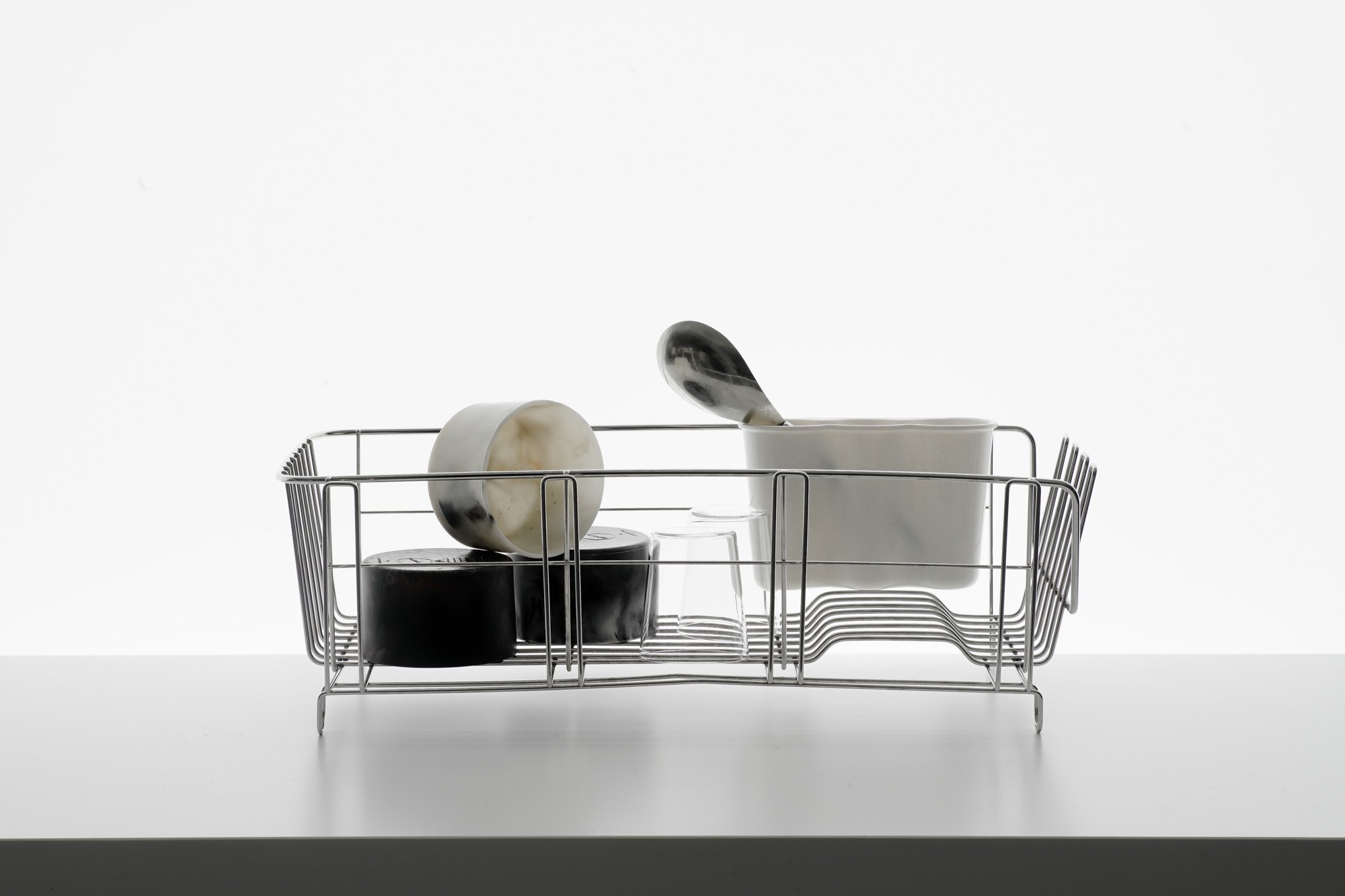
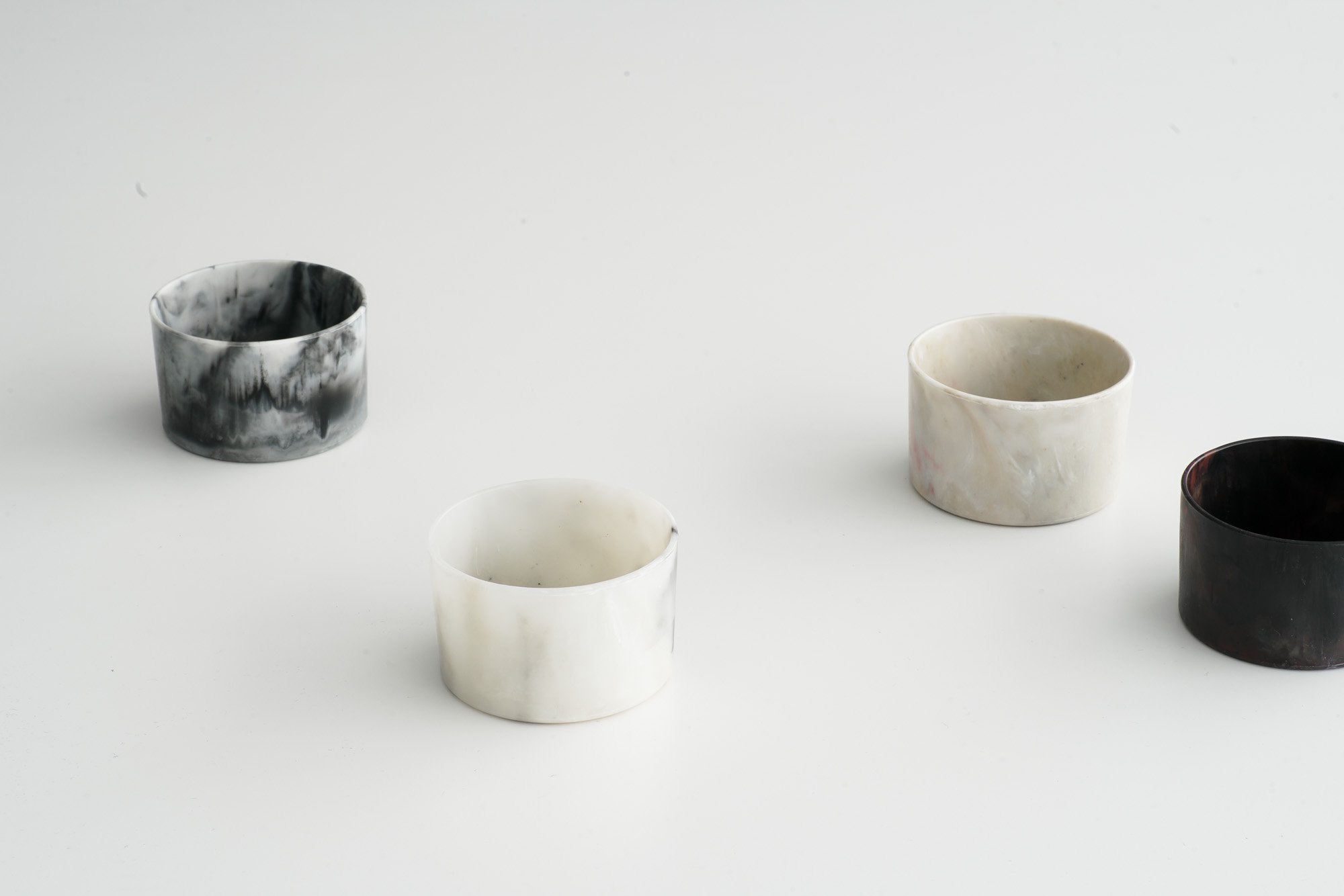
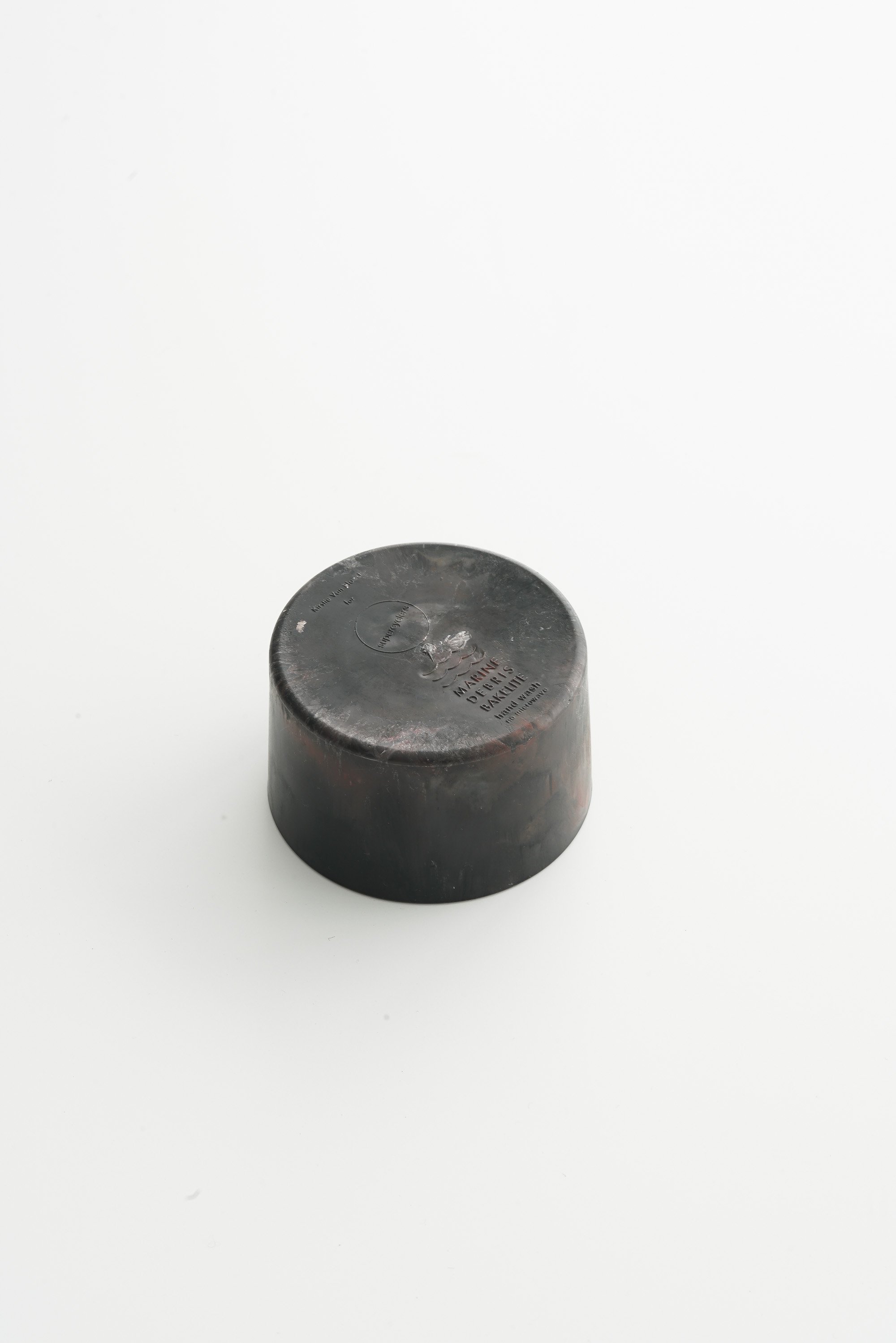
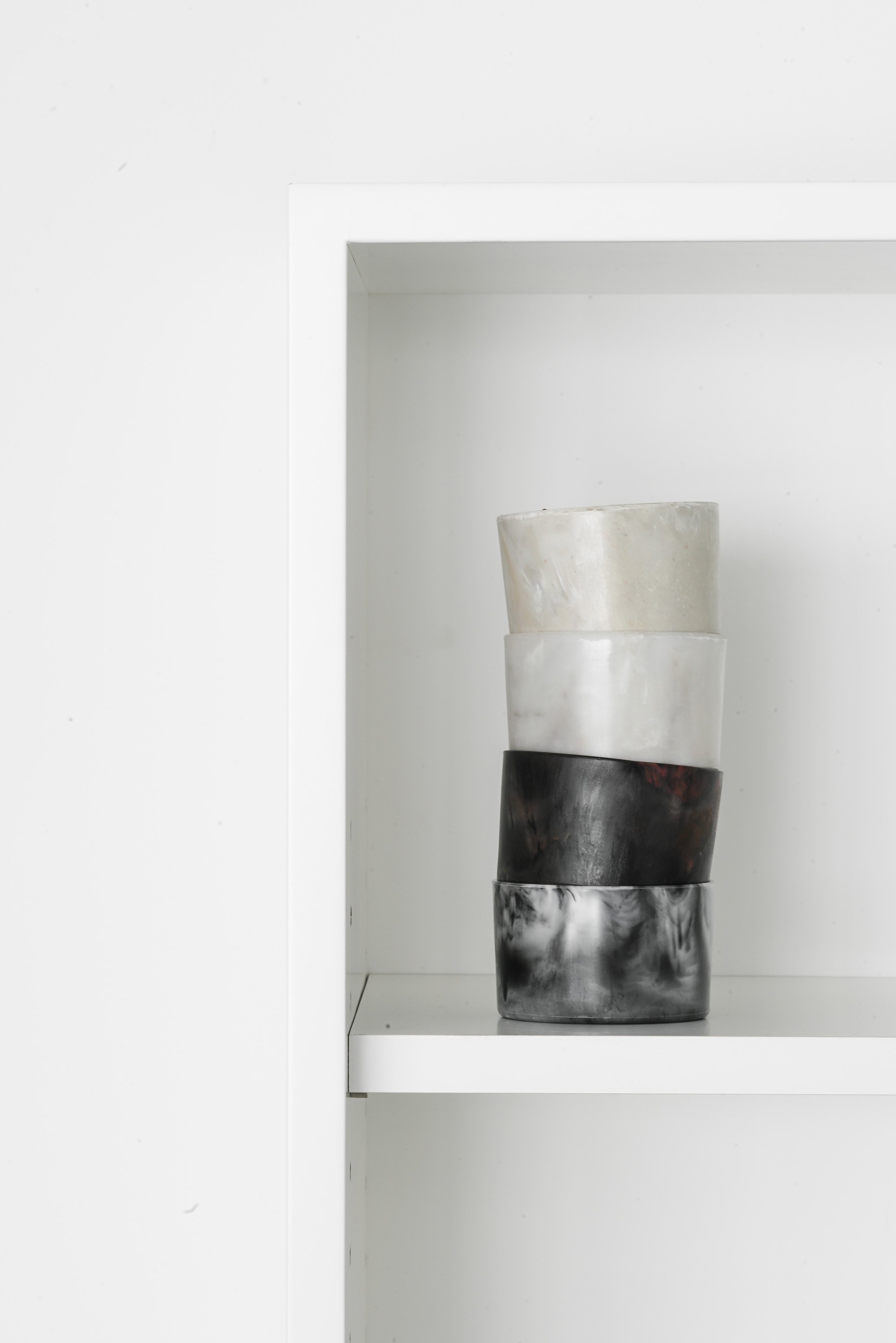
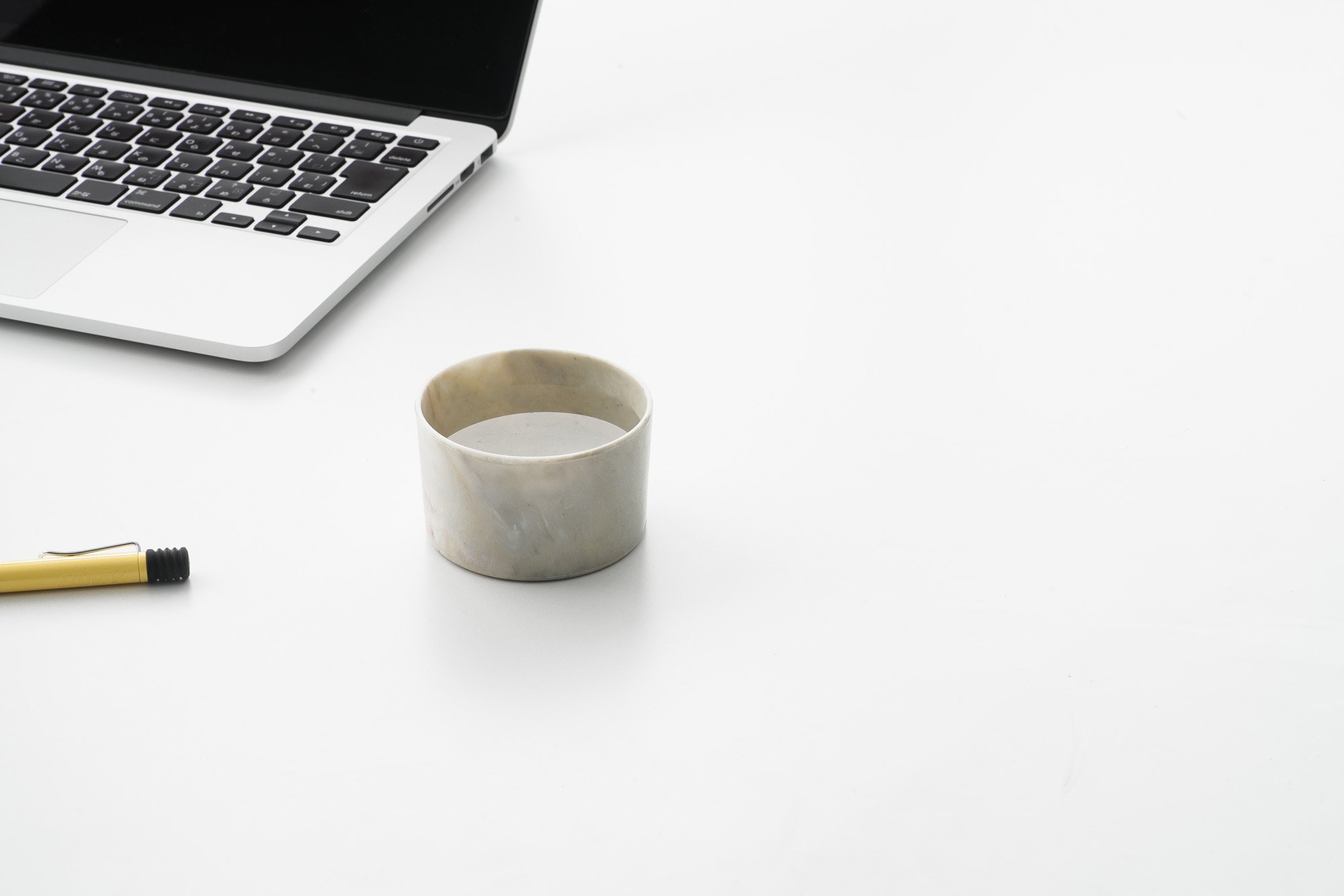
TAKAHIRO TSUCHIDA
DESIGN COLUMN Vol.4
Kirstie van Noort - Marine Debris Bakelite
日本の有田の陶磁器メーカーが、世界各国の17組のデザイナーと組んで作品を開発する「2016/」というブランドがある。一連の作品が発表された時、個人的に率直に惹かれたのは、スウェーデンのIngegerd Råmanと、オランダのKirstie van Noortによるテーブルウェアだった。17組の中で彼女たちに共通していたのは、今まで器のデザインを主に手がけ、自ら轆轤や釉薬を扱えること。経験がなければ器をデザインすべきでないとはまったく思わないが、あるジャンルを突き詰める意義は大きく、特に器はそういうジャンルなのかもしれない。ふたりの作品は、単に器らしい、器ならではの美しさを感じさせるものだった。
そのKirstie van Noortの最近の作品に、オーストラリアのSupercyclersとコラボレーションしたMarine Debris Bakeliteのカップがある。Marine Debris Bakeliteは、近年、特に問題になっている海洋に廃棄されたプラスティックを回収し、独自の方法で再活用を進めているプロジェクト。白、黒、グレー、赤褐色などのバリエーションを揃え、さらに1点ずつ独特の色ムラがあるのが特徴だ。素材感のモチーフになったのは20世紀初頭に開発されたベークライトで、これは初めて化学的に構成されたプラスティックとされる。当時、鼈甲に似た素材感と造形の自由度から人気を博し、多くの日用品に用いられた。「Marine Debris Bakelite」は、見た目だけでなく重量感や密度感もベークライトを意識している。
Kirstie van Noortは、著名なオランダ人デザイナーが数多く輩出するデザインアカデミー・アイントホーフェンを卒業している。製陶所の廃棄物から釉薬を調合したテーブルウェアを手がけるなど、コンセプチュアルなアプローチでいくつもの器をつくってきた。その作品は同校で学んだ若手デザイナーのグループ展「Dutch Invertuals」などで発表され、広く知られるようになった。Marine Debris Bakeliteのコンセプトは、彼女にとって共感できるものだったに違いないが、扱う素材としてはハードルもあっただろう。プラスティックのテーブルウェアが、セラミックやガラスのように普及しないのには理由がある。今回の試みは、それだけで海洋プラスティックの問題を解決できるものではない。しかし、器に対する彼女の感性を生かし、素材への先入観を覆そうという発想は、1つのカップから広く伝播していくかもしれない。美しさの概念を更新しようという意志を、そのデザインに感じる。
土田貴宏 / ライター、デザインジャーナリスト
1970年北海道生まれ。2001年からフリーランスで活動。国内外での取材やリサーチをもとに、デザイン誌をはじめ各種媒体に寄稿している。
A Japanese ceramics manufacturer in Arita, Japan, has teamed up with 17 designers from around the world to develop a brand of work called 2016/. When a series of works were presented, I was frankly attracted to the tableware by Ingegerd Råman from Sweden and Kirstie van Noort from the Netherlands. I don't think that one must design tableware with experience, but it is very important to pursue a certain genre, and tableware in particular may be such a genre. The two artists' works were simply vessel-like, with a sense of beauty that is unique to vessels.
One of Kirstie van Noort's recent works is the Marine Debris Bakelite cup, a collaboration with the Australian Supercyclers. Marine Debris Bakelite is a project that recovers plastics discarded in the ocean, a particular problem in recent years, and promotes their reuse in a unique way. The products are available in white, black, gray, reddish-brown, and other variations, and each piece is also characterized by its unique unevenness in color. The material motif is Bakelite, which was developed at the beginning of the 20th century and is considered to be the first chemically composed plastic. At the time, it was popular because of its tortoiseshell-like texture and flexibility in form, and was used for many everyday items. The "Marine Debris Bakelite" is not only visually appealing, but also in terms of weight and density.
Kirstie van Noort graduated from the Design Academy Eindhoven, which has produced many famous Dutch designers. She has created a number of vessels with a conceptual approach, such as tableware with glazes made from waste from pottery mills. The concept of Marine Debris Bakelite must have been something she could relate to, However, there must have been some hurdles in terms of materials to be handled. There is a reason why plastic tableware is not as popular as ceramic or glass. This attempt cannot solve the problem of marine plastic by itself. However, the idea of using her sensitivity to vessels and overturning preconceived notions about materials may propagate widely from a single cup. I sense in her design a will to renew the concept of beauty.
Takahiro Tsuchida / Writer, Design Journalist
Born in Hokkaido in 1970, Tsuchida has been working freelance since 2001. Based on interviews and research in Japan and abroad, he contributes to various media including design magazines.